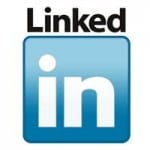Kelli Richards
October 22, 2014
 Formally known as “The Apple Watch,” Apple again forces us all to ask one existential question: What is it? Is it a bird? A plane? A watch, computer, bracelet, phone, or tablet? Now, you might be saying: Smart watches aren’t a new idea. But, in the end, Apple really does just do everything better. Jon Ivey, Senior VP of design at Apple declares, in the iWatch film, “It’s driven Apple from the beginning, this compulsion to take incredibly powerful technology and making it accessible, relevant and ultimately, deeplyl personal.”
Formally known as “The Apple Watch,” Apple again forces us all to ask one existential question: What is it? Is it a bird? A plane? A watch, computer, bracelet, phone, or tablet? Now, you might be saying: Smart watches aren’t a new idea. But, in the end, Apple really does just do everything better. Jon Ivey, Senior VP of design at Apple declares, in the iWatch film, “It’s driven Apple from the beginning, this compulsion to take incredibly powerful technology and making it accessible, relevant and ultimately, deeplyl personal.”
In the iWatch, it seems like Apple has done just that; bringing recognizable Apple design and technology to a smaller, wearable, more personal scale. Whereas other smart watches look just like that; a smart watch. The “iWatch” is a completely different beast. To begin with, it’s a beautiful watch. It’s a classy analog, stainless steel time piece. It’s also a colorful, dynamic, fit exercise partner. Or, it’s a relaxed fit, leather bound daily personal assistant.
Imagine taking the iPad and shrinking it down. Or perhaps take the iPhone plus, shrink it down; now you have the iPad mini, shrink that down, shrink it down again, and again, and throw it on your wrist. It has your favorite application capabilities, from your music, to messages, to fitness monitor, and email. You know all the ways you can customize your iPad? With Apple smart cases and covers? Well, the iWatch offers over two million combinations of watch display from analog to digital and landscape mode, to varying selections regarding band.
Possibly the coolest feature of the iWatch, however, is its most subtle dynamic: a digital touch function. Basically, you can get a friend’s attention, who also has an iWatch, by just tapping, or writing on your iWatch. They sync and your written message appears on your friends display. Anything from, a quick reminder to pick up milk, to a simple, “Hello,” is easily captured with an easy, fast touch of the wrist. Now that’s cool.
So while Apple has been raving about their new release of the iPhone 6, basically joining Samsung in the phablet craze, (and when it comes to that particular product, they remind us that The Next Big Thing has actually been here for quite some time), I’ll just sit back and wait for the next LITTLE Thing, and it’s release in “early 2015.”
THIS is the ultimate in wearable computing – done in the ultimate best way. Steve Jobs would definitely be proud.
Kelli Richards,
CEO of The All Access Group, LLC.
https://allaccessgroup.com







